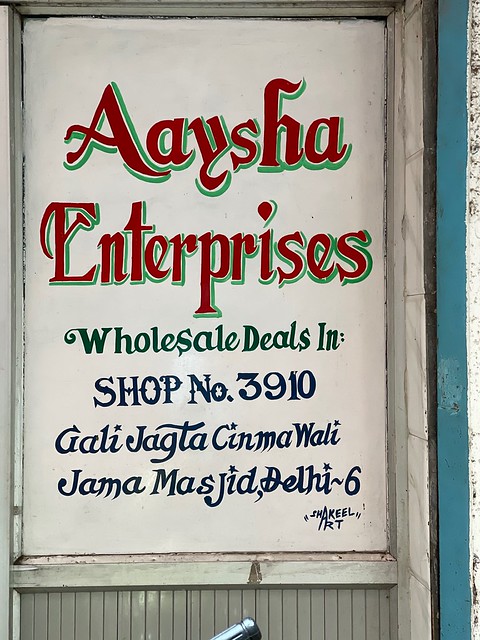
City Landmark – Jagat Cinema, Old Delhi

A single-screen.
[Text and photos by Mayank Austen Soofi]
The grilles are shuttered, but the lobby can be seen through them: the ticket window, the board displaying the show timings and the ticket rates—32 rupees for Box.
Some things become history, are forgotten and yet a little something remains. Like the Jagat Cinema in Old Delhi.
Originally named Nishat, it used to be referred to as “Macchliwallon ka Talkies” because of its proximity to the fish market. Though it stopped screening films in 2004, the cinema building remains.
The place lies mostly ignored, when it should be a draw for connoisseurs of single screens, especially those who like the grandeur of the old sprawling cinema houses, when these places were not just another outlet in a shopping mall but substantial buildings in their own right. This cold morning, the clear sunshine is streaming over the Jagat, its pink walls textured with the patina of several winters and summers. The large hollow frame on the building’s front may be the place where giant film posters would be displayed. The building is sandwiched by various small eateries. The grilled lobby has stray cats wandering like purposeless ghosts.
Jagat screened some iconic Hindi movies, including Mughal-e-Azam in the 1960s. Another was Meena Kumar’s Pakeeza that ran for six months. A poetically inclined resident of the nearby Matia Mahal neighbourhood would come to see Pakeeza every day, travelling on a tonga with the women of the family. The entire party would wait for the song, Chalte Chalte, and then leave the theatre.
Jagat must have had many more stories, but the one of the Pakeeza aficionados has stayed more than the others —it was told by author Ziya Us Salam in his book on Delhi’s cinemas.
While the theatre has been long closed, its presence reins heavy in the area, so much so that it gives its name to the neighbourhood. Letter boxes in the houses and shops on an adjacent street, for instance, are marked with ‘Gali Jagat Cinema Wali’. This alley has another sight, too—that of a slotted window built on the side wall of the cinema building. It must be the box office for the cheap front-row stall. Standing by this window, you almost feel the presence of the clerk behind. Lost time suddenly feels within grasp.
Once upon a screen
1.
2.
3.
4.
5.






Recent Comments